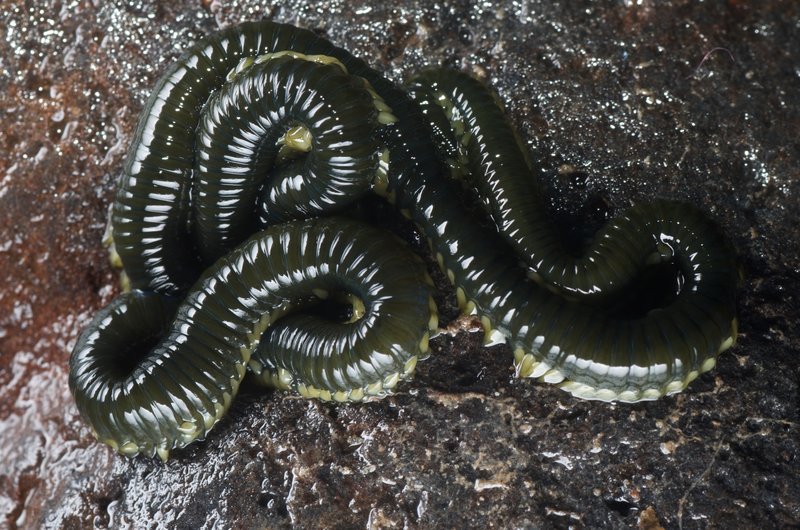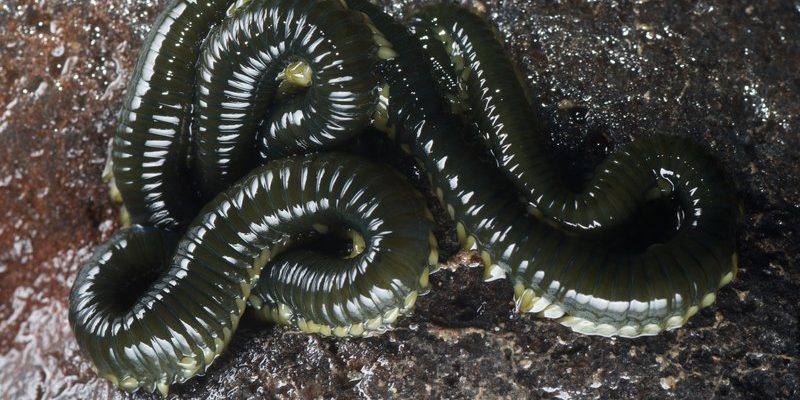
Segmented worms, especially earthworms, are like a bridge between the soil and the environment. They thrive in different habitats and can reveal a lot about the health of the land. Their presence—or absence—can indicate whether the soil is healthy and supports diverse plant and animal life. But how exactly do these worms serve as bioindicators? Let’s dig deeper and uncover the fascinating world of segmented worms and their role in environmental monitoring.
What Are Segmented Worms?
Segmented worms belong to the phylum Annelida and are characterized by their long, cylindrical bodies divided into segments. Earthworms are the most well-known type, but there are various other segmented worms, like polychaetes found in marine environments. These worms are equipped with bristles, or setae, that help them move through the soil and water.
You might be wondering why we should care about these little creatures. Well, segmented worms are essential to the ecosystem. They aerate the soil, break down organic matter, and contribute to nutrient recycling. This means they not only help plants grow but also keep the environment balanced and healthy.
In terms of environmental monitoring, segmented worms act as bioindicators. Their sensitivity to changes in their environment allows scientists to evaluate the health of soil and water ecosystems. For instance, if you find a thriving population of earthworms in a garden, it’s a good sign that the soil is rich and healthy. Conversely, a lack of worms might indicate pollution or poor soil conditions.
The Role of Segmented Worms in Bioindication
Bioindicators are organisms used to monitor the health of an environment. Segmented worms fit this category perfectly due to their sensitivity to changes in their habitat. They react to pollutants, changes in temperature, and other environmental stressors, making them reliable indicators of ecological health.
For instance, if a study shows that a specific area has an increasing number of segmented worms, researchers can infer that the soil quality is improving. This can happen after a clean-up effort or better agricultural practices. On the flip side, a decline in worm populations might signal soil degradation or contamination.
Moreover, certain species of segmented worms are more sensitive to pollution than others. This characteristic allows scientists to use specific worm species as “canaries in the coal mine.” For example, if a pollution-sensitive species disappears from a region, it can raise red flags about water quality or soil standards.
How Are Segmented Worms Used in Environmental Monitoring?
In practice, using segmented worms for environmental monitoring involves a few key steps. First, scientists collect samples of soil or sediment from various environments. Then, they search for the segmented worms living in those samples. The types and quantities of worms found can provide instant feedback on the health of the ecosystem.
Typically, researchers will look for specific indicators, such as:
- Diversity of species: A variety of worm species often indicates a healthy environment.
- Population density: Higher numbers often suggest good soil quality.
- Presence of indicator species: Some worms are sensitive to certain pollutants, and their absence can indicate problems.
The results can guide policies around environmental management, agriculture, and conservation efforts. For example, if a farming community finds a drop in worm populations, they might consider adjusting their use of pesticides or adopting organic farming practices. This proactive approach not only helps the farmers but also safeguards the local ecosystem.
Examples of Segmented Worms in Environmental Studies
There are several notable studies showcasing the role of segmented worms in environmental monitoring. One famous example is a project that examined the impacts of industrial waste on soil health. Researchers found that regions exposed to heavy metals had significantly lower worm populations. This prompted further investigation into the soil’s toxicity, demonstrating just how effective these worms can be as bioindicators.
In another study, scientists explored the effects of agricultural practices on soil biodiversity. They discovered that organic farming methods fostered a richer variety of segmented worms compared to conventional farming. This insight led to increased interest in sustainable farming practices that support both agriculture and environmental health.
These real-world examples highlight the practicality of using segmented worms in environmental studies. They not only help scientists understand pollution and soil health but also encourage communities to take action for a healthier environment.
Challenges and Limitations of Using Segmented Worms
While segmented worms are valuable bioindicators, there are challenges to using them in environmental monitoring. One significant issue is their sensitivity to many factors, which can sometimes complicate interpretation. For instance, changes in temperature, moisture, and soil structure can all influence worm populations. This means researchers must carefully consider these variables when drawing conclusions.
Additionally, not all segmented worms respond uniformly to pollution or soil changes. Different species have varying levels of tolerance, so relying on just one type can lead to incomplete assessments. It’s often best to analyze multiple species to get a clearer picture of environmental health.
Another challenge is accessibility. In some regions, segmented worms may be scarce due to habitat destruction or pollution. This scarcity can create gaps in data, making it tougher to monitor environmental changes effectively.
The Future of Segmented Worms in Environmental Monitoring
As we move towards more sustainable practices, the role of segmented worms in environmental monitoring is likely to grow. Scientists are increasingly recognizing the importance of biodiversity, and worms are at the forefront of this movement. They serve as a reminder of the interconnectedness of life and the vital roles even the smallest creatures play in our ecosystems.
Moreover, advancements in technology, such as DNA barcoding, can enhance our understanding of the diverse species of segmented worms. This can help us better pinpoint which species are most effective as bioindicators, making future studies even more accurate.
The rise of community-based monitoring initiatives also holds promise. Engaging local communities to observe and report on segmented worm populations can raise awareness about environmental issues while contributing valuable data for research.
Segmented worms, though small and often overlooked, are powerful allies in the quest for a healthier environment. They provide essential insights into soil health and pollution levels, serving as bioindicators that can guide important conservation efforts. By understanding how these creatures contribute to environmental monitoring, we can better appreciate the intricate web of life and work towards more sustainable practices.
So, the next time you see a worm, remember: it’s not just a worm. It’s a tiny sentinel that tells us a big story about the world beneath our feet. Let’s continue exploring their potential and harness their power for a healthier planet.

